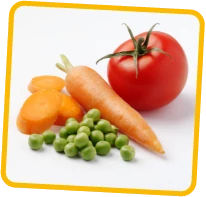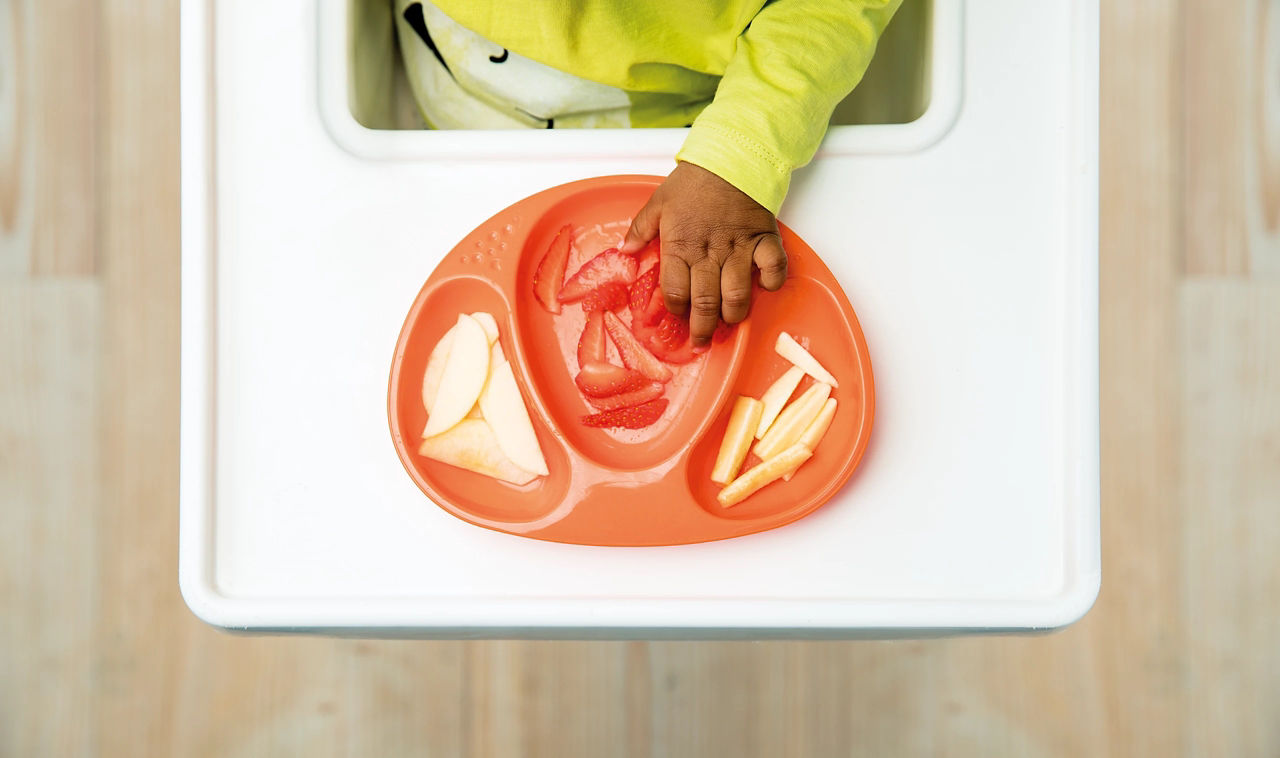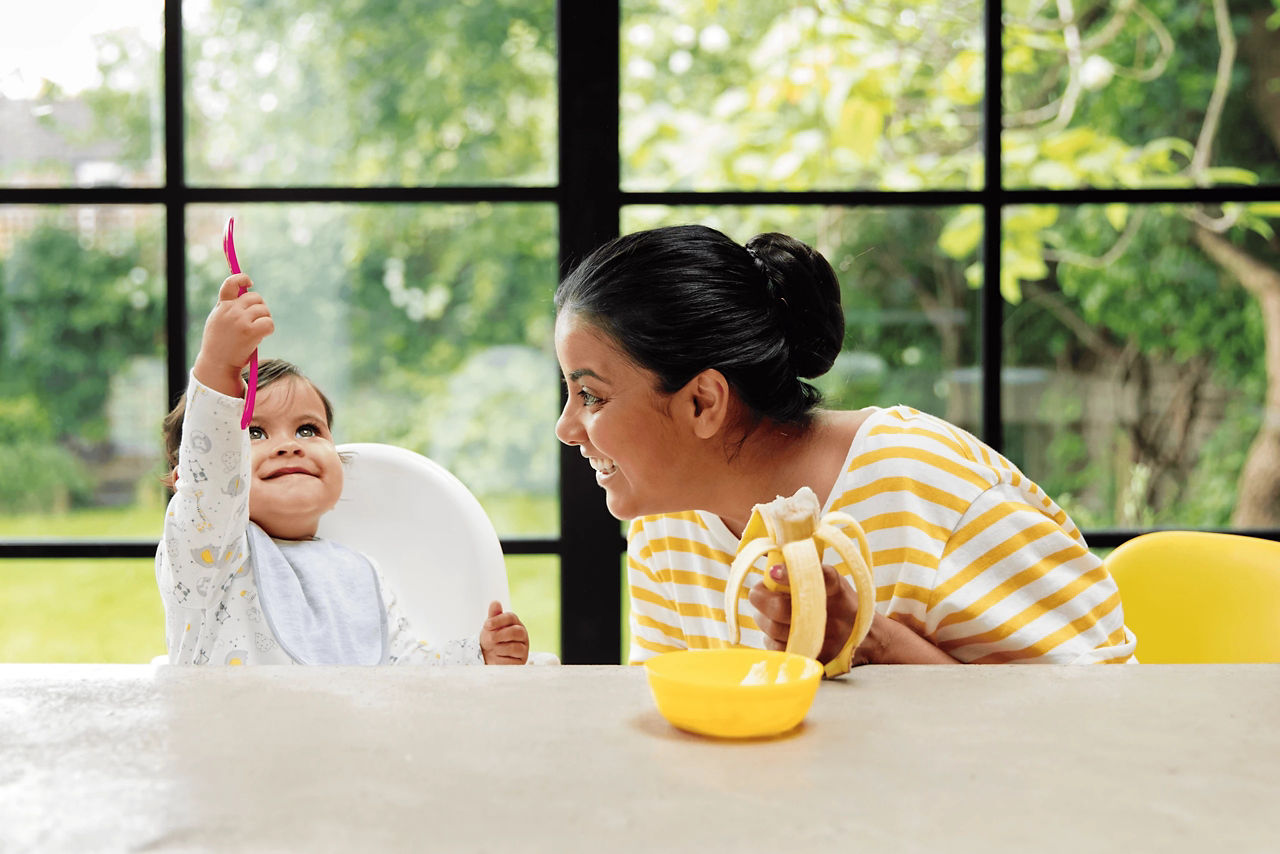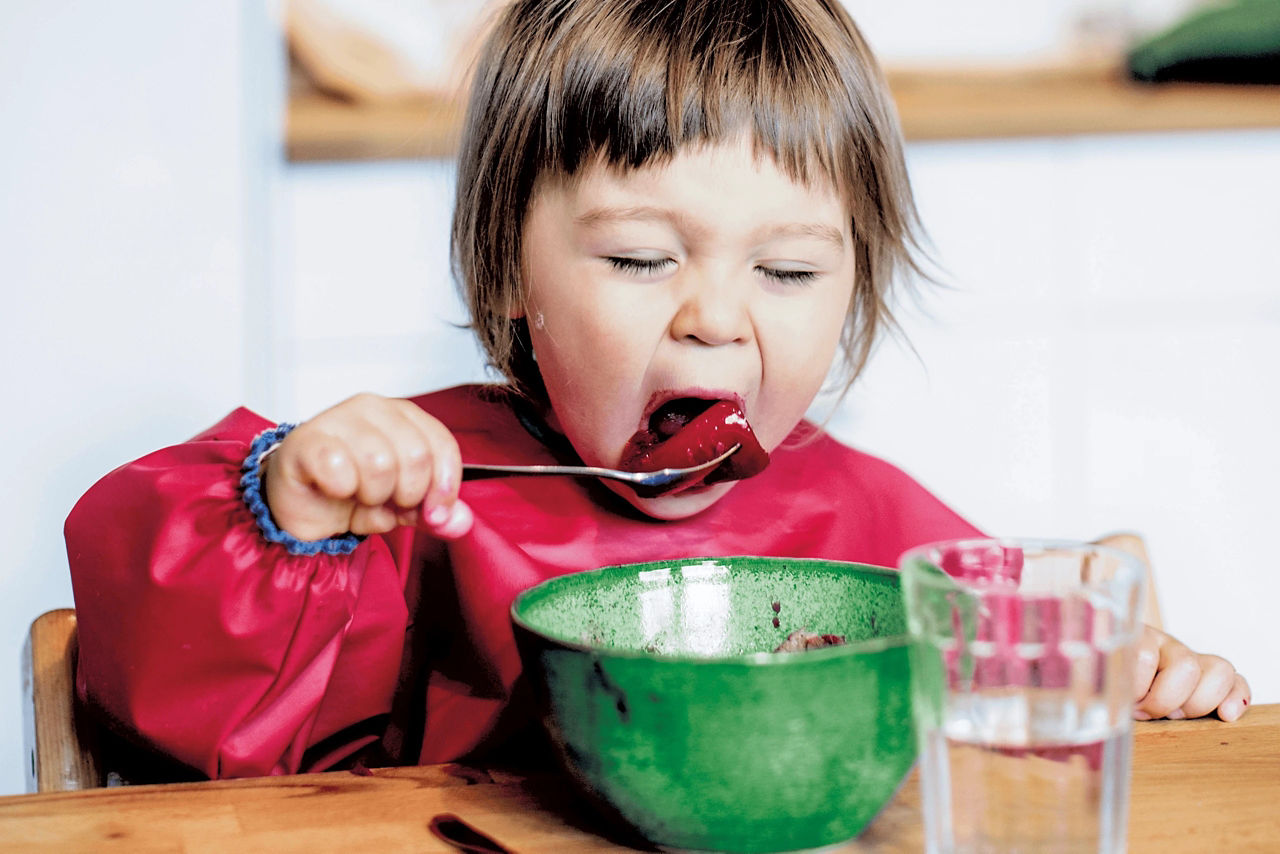Free weaning plan - Register here
Veggies at the ready
Is your baby ready to start solids? The first step on your weaning journey is to introduce single vegetables, like carrots, peas or broccoli. Yummy veggies like these are the recommended first foods for your little one because they’ll help them get a taste for savoury flavours, rather than sweet ones1.

Did you know?
Why should vegetables be the first weaning foods?
Research has shown that exclusively offering single veg for the first two weeks of weaning can help your baby develop a love for veg throughout their childhood!2 So while they might pull a face at first, it’s well worth persevering!
There’s no need to stress about how much your baby eats at this point. Milk still forms the bulk of their diet and fulfils all their nutritional needs. For now, it's just about getting your baby used to the sensation of solid food in their mouth, and learning how to move food from the front to the back of their mouth and then swallowing.
How much food should I offer? And how often?
Start by offering your little one food once a day – just after or between milk feeds when they’re not too hungry or full is often best. At first, they’ll only eat a few spoonful’s, maybe less. Once you get into the swing of things you can gradually offer more feeds a day.
How much milk should my baby have at around 6 months?
At this stage, milk is still your baby’s main source of nutrition, so stick to your usual routine when it comes to milk feeds3. Read more about how much milk your baby should have during weaning.
Choking and gagging
When your baby first tries lumpier textures or starts to chew for themselves, it’s normal for you to be concerned about choking. It’s important to remember that there are lots of benefits of introducing new textures to their diet, so you shouldn’t shy away from it.
Remember your little one has a natural gag reflex to help protect them from choking, and that it’s normal for them to cough a little when trying new textures.

To reduce the risk of choking, make sure you prepare food safely by removing skins, pips and bones, and avoid very hard foods like raw vegetables. You should also cut foods into small pieces – particularly small round foods like cherry tomatoes and grapes.
Ultimately your baby’s readiness for new textures isn’t just down to their age, but also the textures they’ve already learned to accept. By choosing foods with textures they’re already comfortable with and progressively offering more adventurous textures, they’ll be safely on their way to mastering those chewing skills.
Never leave your baby alone when they’re eating or drinking, and always make sure they’re sitting upright.
Getting started: 5 handy hints
- Begin weaning at home, or somewhere they know well.
- Pick a time when they’re not too tired, full or hungry.
- Remove any distractions.
- Keep it fun – let them play with their food.
- Smile! If you’re happy, your baby’s happy!

Keep going
Don’t be put off if they’re less than keen. All babies are different, so relax, keep trying and let your little one progress at their own pace. It can take up to 8 to 10 tries for your baby to accept a new flavour4,5.
 Do not leave your little one unattended when eating and drinking
Do not leave your little one unattended when eating and drinking
Adding more variety
Once your little one’s enjoyed eating a few simple veggie flavours, you can begin to offer some fruits too, as well as a whole world of new veggie flavours. Introducing a wide range of veg and fruit tastes now means they’ll be more likely to be adventurous eaters later on1. You can also try different types of soft finger foods, such as ripe peach slices, avocado sticks or cooked sweet potato wedges.
As soon as your little one’s 6 months old and getting used to veggie and fruit flavours, there’s no harm in introducing foods from other food groups too, like chicken or pasta. If they’re getting the hang of eating solids, you may want to start feeding them more often too. Try offering two or more different veg or fruit tastes a day. And carry on with their milk feeds as usual.
"One spoon for them, and one for you can be a very nice way of making them feel they have some control, while providing you with the reassurance that at least some of it is going in!"
Claire, mum from Bexhill-on-Sea, Sussex
Moving on: 10 handy weaning tips
- Keep feeding them the things they love, as well as yummy new flavours.
- Start with small amounts of food in your baby’s bowl and add more if needed.
- Use either fresh or frozen fruit or veg – they’re equally good for your little one.
- Try not to mix sweet and savoury flavours – let them learn to understand the difference.
- Remember, it can take 8 to 10 tries before your little one learns to love a new flavour. Don’t give up!
- Steam, rather than boil vegetables – it keeps in the goodness!
- Try offering food at different times of the day.
- Remember to remove seeds and stones.
- Make sure finger foods are soft and well cooked.
- Don’t save leftovers from their bowl – their saliva will have added germs.
- British Nutrition Foundation. Complementary feeding: Vegetables first, frequently and in variety. [Online]. 2016. Available at https://onlinelibrary.wiley.com/doi/epdf/10.1111/nbu.12202 [Accessed October 2019]
- Chambers L et al. Reaching consensus on a ‘vegetables first’ approach to complementary feeding. Nutr Bull 2016;41:270-276.
- NHS Start for Life – What to feed your baby – around 6 months. [Online]. Available at: https://www.nhs.uk/start4life/weaning/what-to-feed-your-baby/around-6-months/ [Accessed October 2019]
- Maier A et al. Effects of repeated exposure on acceptance of initially disliked vegetables in 7-month old infants. Food Qual. Prefer. 2007; 18(8): 1023–1032
- Sullivan SA & Birch LL. Infant dietary experience and acceptance of solid foods. Pediatrics 1994; 93(2): 271–277.
Last reviewed 28.07.2020
Need free advice with a smile? Get in touch with our dedicated Care team.
Ask us a question (8am - 8pm Monday to Friday, 10am - 4pm Weekends)
Messenger
Contact us on Facebook (10am - 10pm, 7 days a week)
Call us
Call us on 0800 977 8880 (8am - 8pm Monday to Friday)
FAQs
Get answers to your most frequently asked questions




